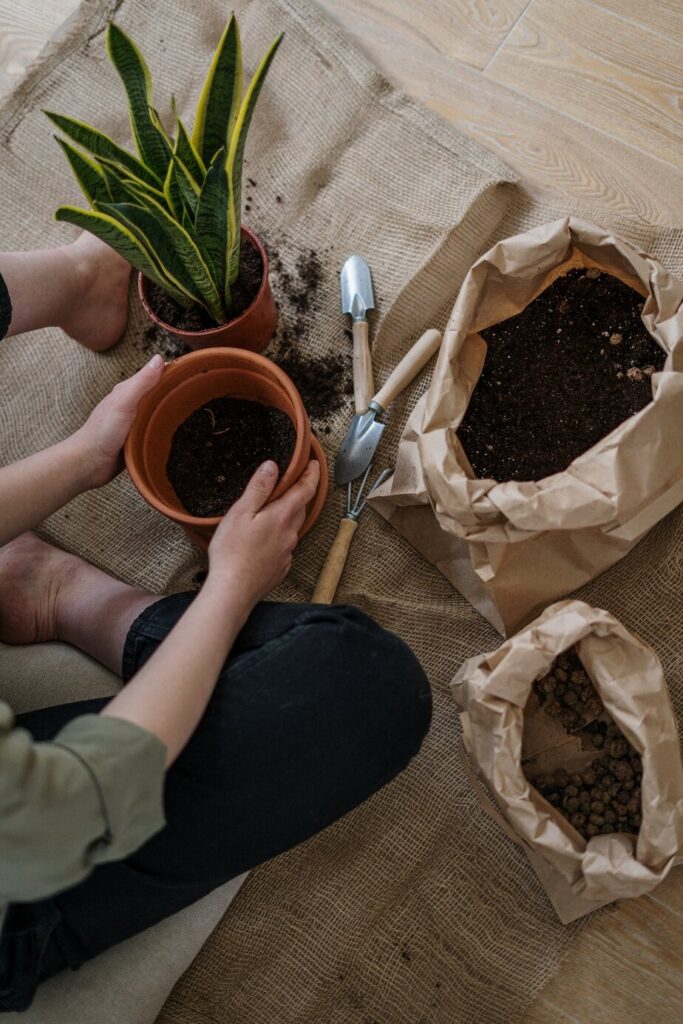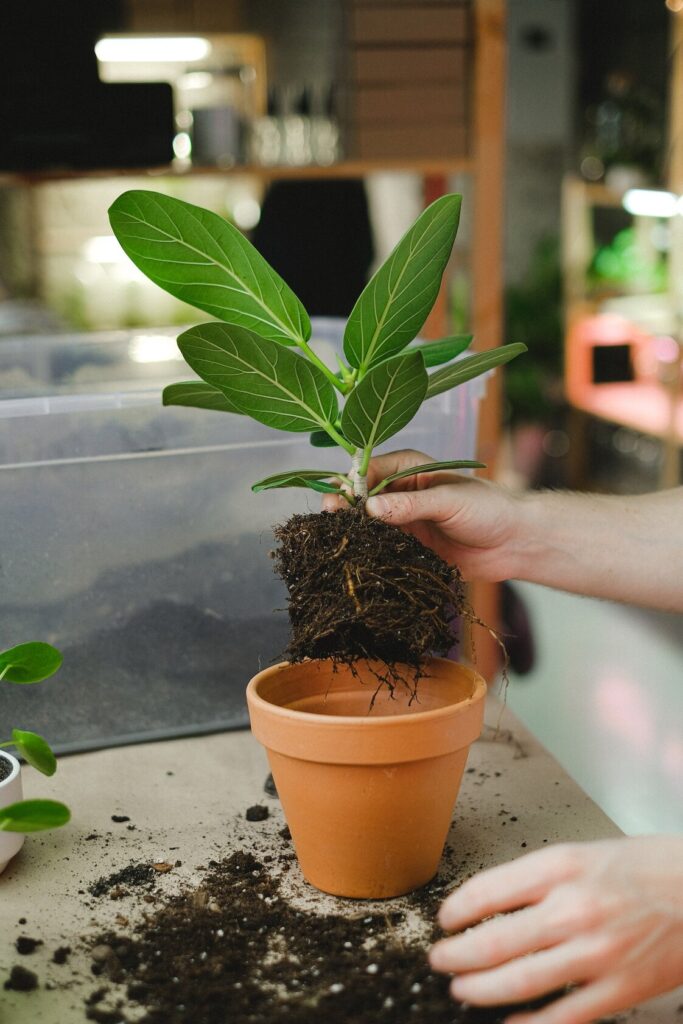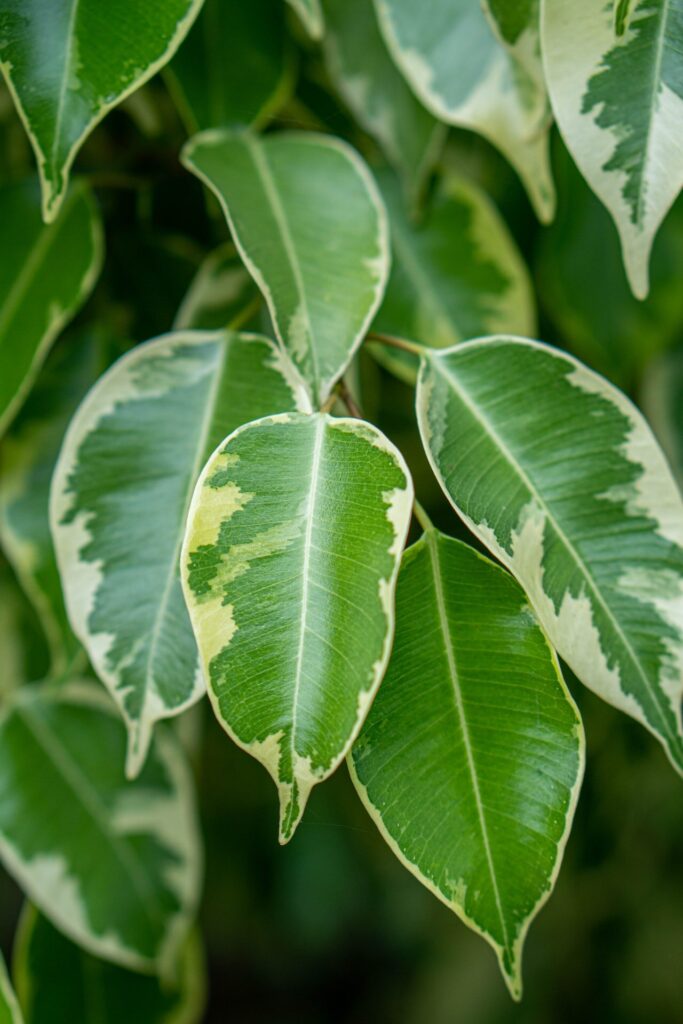Ficus Benjamina, generally known as weeping fig, is a variety of small flowering tree that belongs to the Moraceae family and is native to Asia and Australia. In this blog post, I will provide the necessary information about how to propagate a Ficus Benjamina plant. Despite the fact that there are numerous ways to propagate this plant, I will show you the most effective ones.
There are two effective ways to successfully propagate Ficus Benjamina from cuttings. The first one is propagating them in soil and the other one is propagating them in water. Both have their own pros and cons. I will explain each step of these methods properly so you will have an idea what is the best method that you can use to propagate it.
How to propagate Ficus Benjamina cuttings in soil?
Preparing the pot
You will first need to find a suitable pot which you will plant your cutting into. Fill the pot with a well-draining potting mixture and water the potting mixture all the way through to make sure that every part of it is moist.

Prepare your cutting
The location where you get your cutting from an adult Ficus Benjamina must be carefully chosen. Identify the exact place where your Ficus Benjamina will benefit from some pruning. Select a lopsided area where you want to get your cutting for that area to have significantly better growth after getting your cutting.
Get your cutting from just below the node of the steam. A cutting must have a node in it to properly propagate as this is where the root system of your new plant will begin to develop. Be extra careful when obtaining your cutting as the nodes of Ficus Benjamina are not that visible.
Planting your cutting
Punch a hole in the middle of the potting soil mix deep enough to securely support your cutting. A pencil, skewer, or finger will be just right to do the job. After putting your cutting into the hole, press the soil around your cutting firmly. Lightly water the area around your cutting to make sure the upper part of the soil is moist.
Finding the right location
Find the perfect location to place your cutting. The ideal location for a Ficus Benjamina plant is where it will be able to receive light but is not directly exposed to sunlight. Finding the right place that has warm temperatures and high humidity is also crucial.
You can also consider covering the pot where your cutting was placed with plastic to improve the humidity around the soil. As a result, the soil in the pot will stay moist and prevents the cutting from wilting.
Monitoring and watering
Check your cutting regularly. You can choose to check your cutting every 1 to 2 days. Always check the soil around your cutting if it is consistently moist but not too soggy. Frequently check the upper part of the soil if it is damp. If the soil feels dry to the touch, do not hesitate to give your Ficus Benjamina adequate water.
Also, check if molds start developing on the cutting’s leaves or the soil’s surface. If this happens, reduce the humidity around the pot by taking off the covers you put on earlier.
Transplanting your cuttings
If you have planted multiple cuttings in one pot, you should immediately transfer the other cuttings into their own pots after seeing that the cuttings are already developing. This usually takes 4 to 6 weeks approximately.
Fertilizing
While still in its growing stage, fertilize your young tree once a month as soon as it produces new leaves. Stop fertilizing when the trees are about to reach their maturity stage. When in cold climates, stop fertilizing two months before the first sign of frost.
How to propagate Ficus Benjamina cuttings in water?
Obtaining your cutting
Select the appropriate stems that you wish to take a cutting from a parent Ficus Benjamina plant. For the better health of the parent plant, it is advised to take a cutting from an area that already needs pruning. The perfect length of cutting that you can obtain is about 4 to 6 inches in length.
When cutting the parent’s stem, make sure to cut below the node of the stem so that the cutting will have nodes in them. These nodes are important for the cutting’s propagation as these nodes are where the new root system of your cutting will grow. Nodes in a Ficus Benjamina plant are not that obvious, it is important to be extra careful in this process.
Removing the leaves from the cutting
From the base of your cutting up to 2 to 3 inches, remove all of the leaves that are attached to the cutting. Ideally leaving at least two pairs of leaves at the tip of each stem. Removing excess leaves improves the cutting’s propagation chances. An extra leaf will result in water loss through transpiration and will greatly increase the chances of your cutting wilting.
Prepare the container
Prepare a jar or any container and fill it with water and place your cutting in the container. Place the container in a warm location with access to indirect sunlight. It is also not necessary to put a rooting hormone to assist your cutting’s root development as Ficus Benjamina is fine without it.
When you notice that the stem of your cutting begins to rot, keep in mind that water is not the main culprit. Rather, the cause of this is fungi and other pathogens. By making sure that every piece of equipment you’ve used has been cleaned, you can avoid these kinds of problems. Water should also be as sterile as possible. These precautions limit the passing of bacteria that are harmful to cutting.
Transplanting your cutting
When you notice that the cuttings’ roots have already grown to at least 4 inches in length, you can start transferring them into a jar or a pot filled with soil mixture. Make sure to put a well-draining soil mixture in the pot.

Create a hole in the center of the pot, then insert your young Ficus Benjamina plant. Surround your cutting with soil until it is shaped like a dome. Water the soil after planting your cutting to keep the soil moist.
Monitoring the young plant
Constantly monitor your young plant. This will prevent any problems and diseases that struck your plant from worsening. Always check the soil around your plant to see if it is continuously moist. To do this, you just have to feel the top inch of the soil. Water your young plant as soon as you notice the soil around it drying up. Additionally, it is crucial to remember not to overwater your young plant.
Fertilizing
Fertilize your young tree once a month after it starts sprouting new leaves and while it is still growing. You can stop fertilizing your young tree when it is just about to mature. In cold climates, stop fertilizing 2 months before the first sign of frost.
FAQs
Is it better to root Ficus Benjamina in water or soil?

Both methods have their own pros and cons. While propagating your cutting in water lessens the chance that it will wilt, it does raise the possibility that the stem of your cutting will rot. On the other hand, if you choose to propagate your cutting in soil, there is a slight chance of your cutting wilting, but it doesn’t have the same risk of the stem rotting as when you grow it in water.
How do I take a cutting from a Ficus Benjamina?
When cutting the stem of an adult Ficus Benjamina, make sure to cut from just below the stem so that the nodes will be included in the cutting that you are about to plant. The nodes are very important as your cutting will not be able to grow its root system without the nodes.
Where do you cut a Ficus Benjamina for propagation?
You must strategically identify the place where you will get your Ficus Benjamina cutting. It is better to cut to a part that also needs pruning as the adult plant will also benefit from pruning. Choose an area that is visibly uneven to promote much better growth in that said area.
Conclusion
It is not that difficult to plant a Ficus Benjamina plant. In actuality, there are not that many steps involved and it is really simple. Any of the two methods above is very easy and each method has its own advantages and disadvantages. The only thing you have to keep in mind if you want to propagate a Ficus Benjamina plant is its nodes as they are very crucial for successful propagation. Overall, water propagation is considered to be the easiest method to propagate a Ficus Benjamina.

Elizabeth Mcmillan is a passionate gardener with a strong interest in plants. She used to be a teacher, but Elizabeth has spent the last few years immersing herself in the world of plants, learning about their biology and cultural value and trying out different ways of growing them in her own garden. Elizabeth Mcmillan loves indoor plants, succulents, and cacti, and her friends and family know her as a plant care expert.







